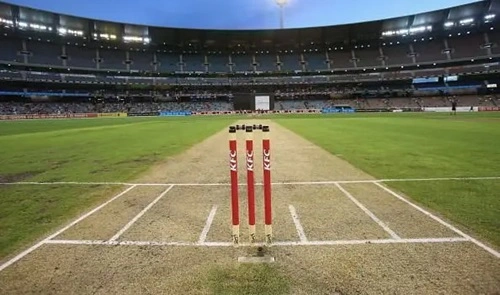Well, we won’t make it any more complex for you, so just know that a cricket pitch is exactly 22 yards long, which is the same as 66 feet or about 20.12 meters. It’s as simple as that! And for those who’re new to cricket and learning a few things about this sport to enjoy it even more, just know that a cricket pitch is this rectangular strip right in the center of the field, and all the real action in cricket, you know like the bowling, the batting, the stumping, all of that happens here. Though, some people who have been watching cricket for a long time now confuse pitch with that entire grassy area, but that’s not just factually correct. You see, the proper “pitch” is just the short, dry, flat surface between the two sets of stumps.
Wait! Why Exactly 22 Yards? Why Not More And Shorter Than That?

Well, sure, if you are not playing professionally, the pitch can be shorter or slightly longer than that based on your preference. But when it comes to international or professional cricket matches, it is actually written in the cricket rule books that the pitch must be 22 yards, always.
But what exactly is 22 yards? Like, why not 21, 20, or 24 or anything like that? See, the history of that actually goes back to 1744 when the first-ever official rules of the cricket sport were written. And it was all happening back in England, and at that time, there used to be a measurement device called the Gunter’s chain, which used to be exactly 22 yards long. And over time, when people were used to measuring the pitch, they straight up used to go with the full length of that measurement tool. It’s kind of amazing that even after 280+ years, we still play cricket on a pitch that’s the exact same length.
What’s on the Pitch, Though?
Pitch isn’t just a basic strip, and that’s it. Nah, there are actually some important parts you see on a pitch, especially when it is a professional or international match. Like, first of all, by this point, you all know that a pitch is exactly 22 yards long, but the width of the pitch is always 10 feet wide.
Then, if you look closely, you’ll see that there are stumps (three wooden sticks) on both ends and in front of them, there’s a white line called the popping crease. This is the line that helps decide certain things in the game, like, during a run out or stumping appeal, the batsman must stay within the popping crease or they’ll be declared out by the umpire.
Things just don’t end there though, you see, then there is also something called the danger zone or protected area. What? Yes, this is a narrow area right down the center. If you have been watching cricket for a while now, you must have seen umpires many times warn the bowlers not to run on this very narrow center area of the pitch. Why? Well, usually, bowlers and batsman have spike shoes on, and if they run on the pitch however they want, it can run the pitch condition and make it more favorable to the bowling team, especially when the spin attack is going on.